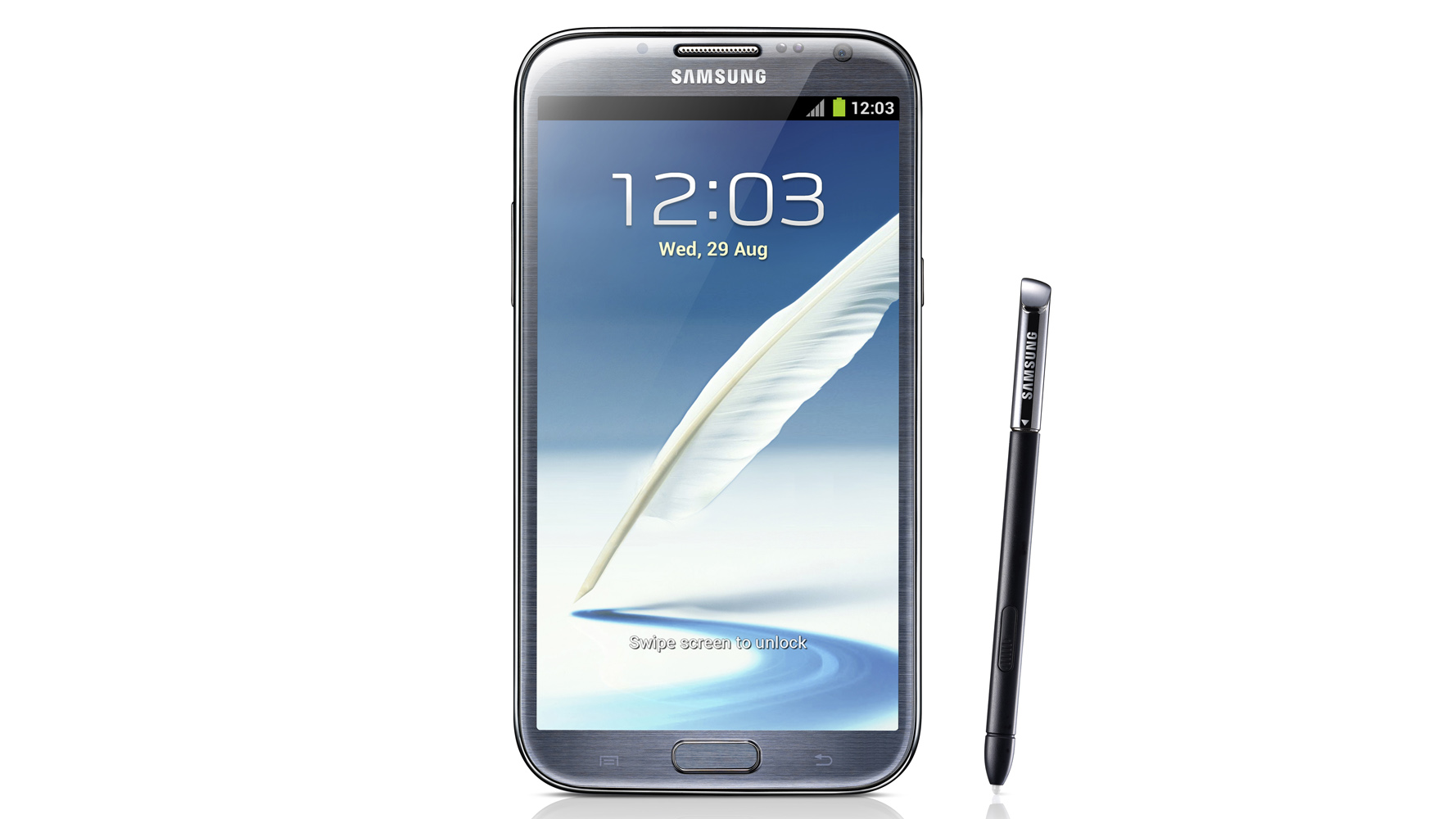Why you can trust TechRadar
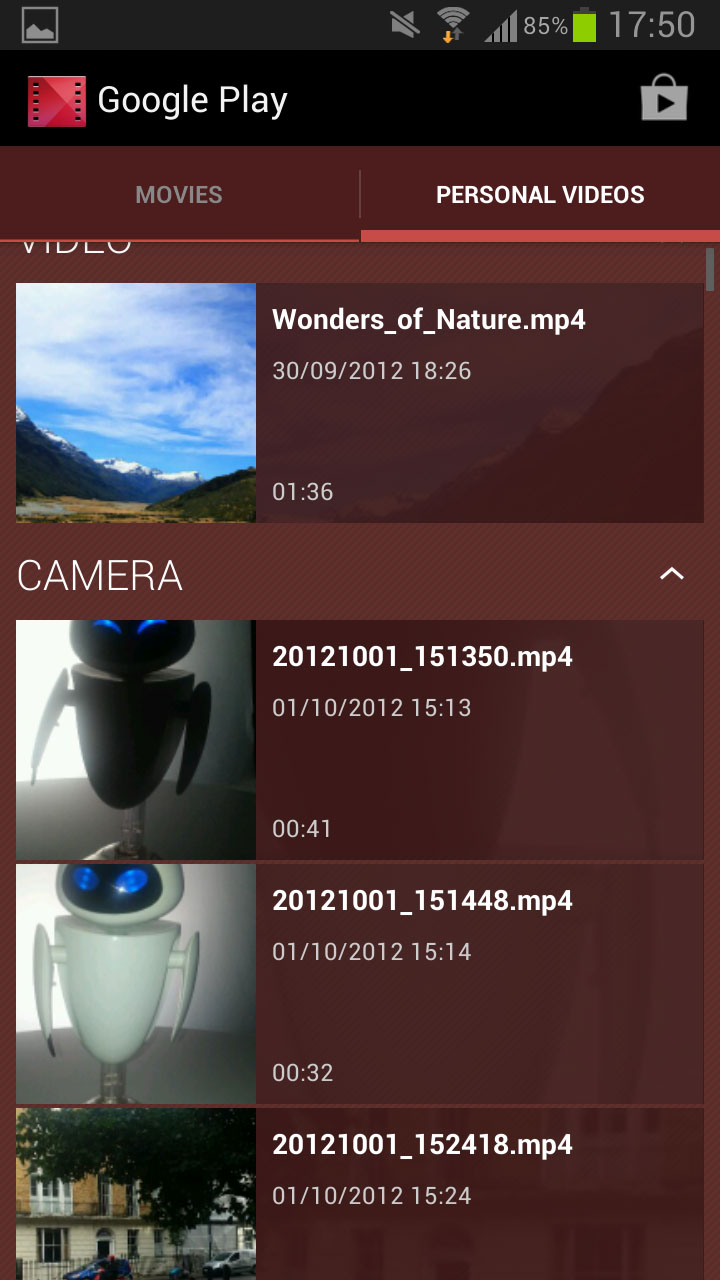
Apps
When it comes to adding a few extras out of the box, Samsung's one of the good guys.
When we reviewed the Motorola Razr i, we noted that Motorola had made a good phone but been a little tight with the bundled non-standard Google apps.
Luckily, the Samsung Galaxy Note 2 doesn't suffer from this unfortunate affliction, although it doesn't go overboard either.
First on the Samsung Galaxy Note 2, there's the Google apps.
Within these you get your standard Google suite, which also includes Google Books and Google Play.
These two services deserve a special mention, if only for the fact that Google has pulled its proverbial socks up here.
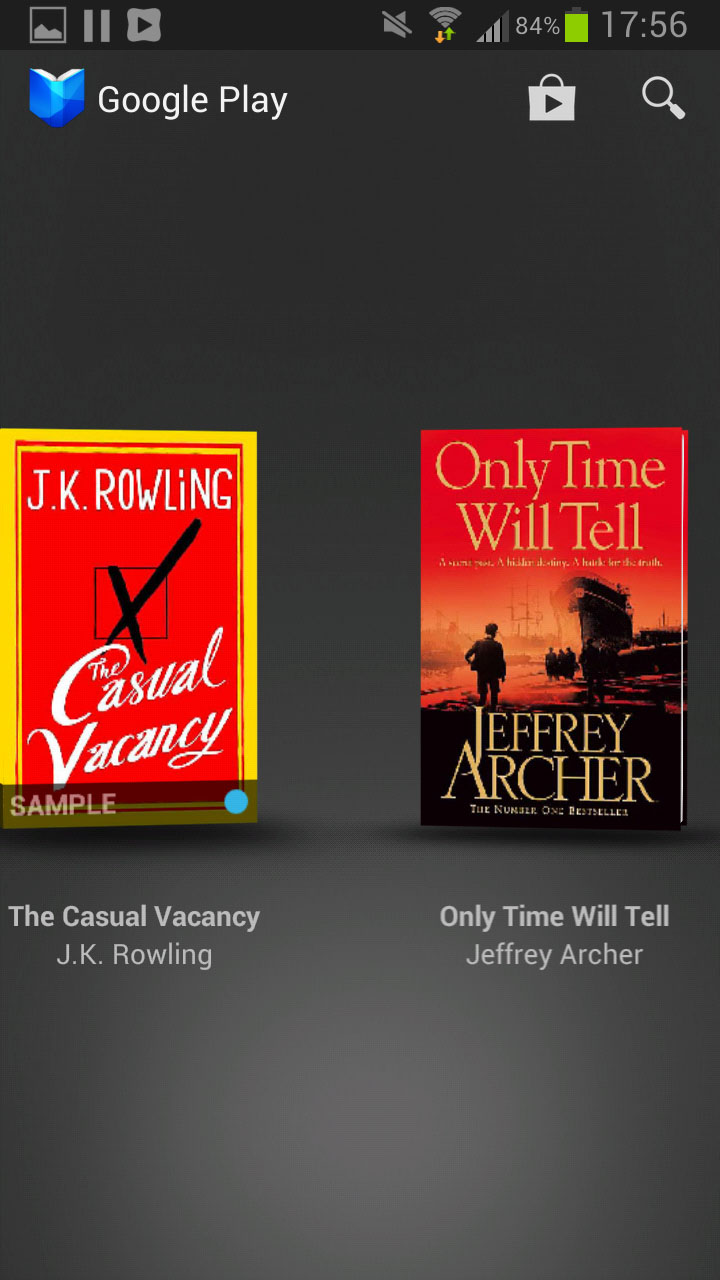
The offerings are now interwoven with the Google Play store where we once used to go just for apps and games, and it feels like a complete offering.
The book store, in particular, is trying to wrestle some custom away from Amazon's Kindle app.
And based on how it works, it may well succeed.
We really liked the fact that we were able to download a sample of JK Rowling's first non-Harry Potter book and try it out.
Add to that the little page turning animations reminiscent of Apple's iBooks, and you've got a winner on your hands.
Maps
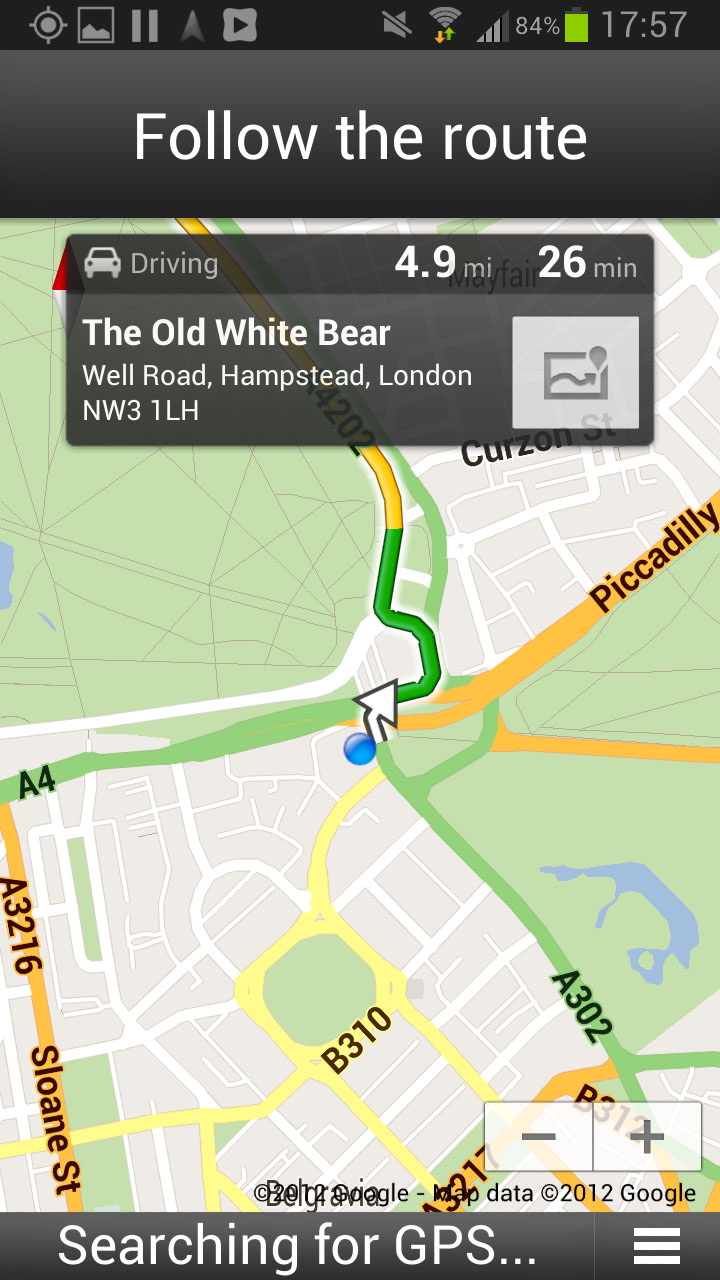
And then we have Google Maps. We mention this because it is such a powerful piece of software, and this was highlighted more because of the famous Apple Maps fiasco.
The irony here, sadly, is that the Google Maps offering on iOS is now (arguably) better than the Android version.
The fact is that Google has been offering turn by turn navigation for a few years now (though technically it is still in Beta) and it is frankly fantastic.
Free, simple to use and interlinked with transit directions, this is how you make an almost perfect mapping app.
Anybody who buys the Samsung Galaxy Note 2 is not just getting a top smartphone, but also a fully comprehensive, fully up to date, turn-by-turn sat nav solution.
And with the Samsung Galaxy Note 2's speed at locking on to GPS, you'll really do well with it if travelling is your bag.
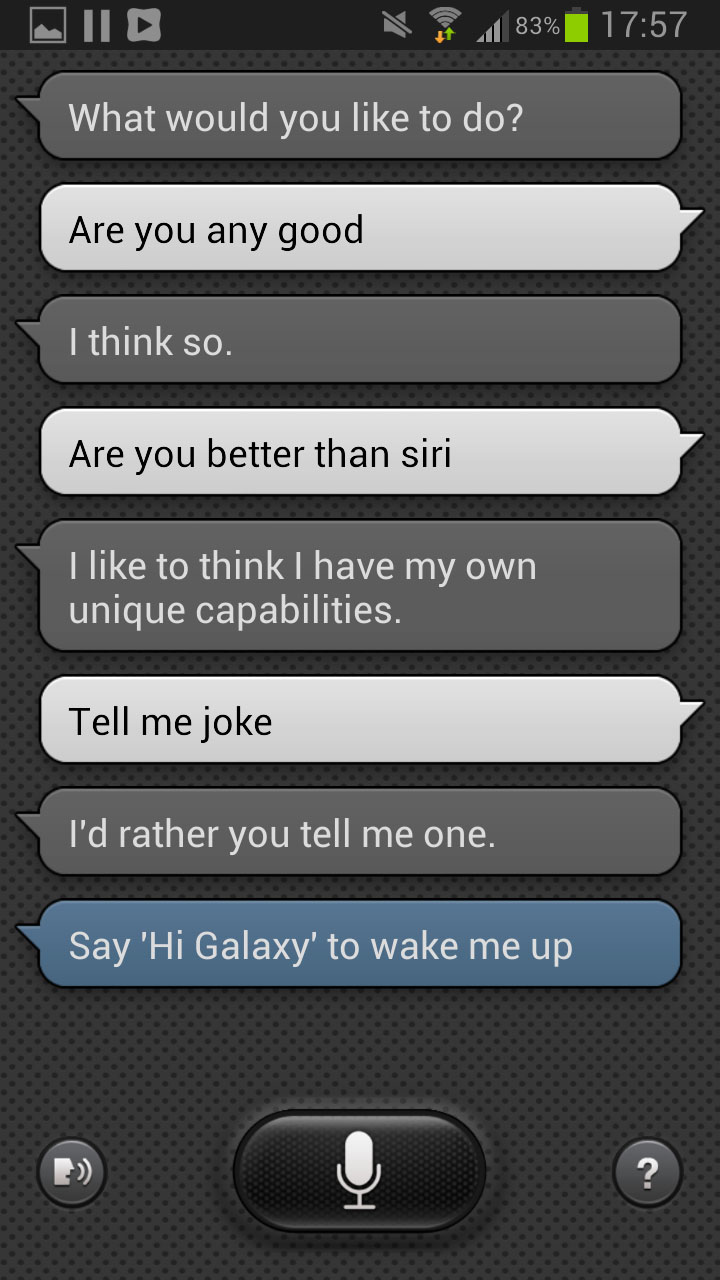
In a bit of a doubling up example, Samsung has also included S-Voice. Its main plus is that you can fire it up simply by saying 'Hi Galaxy' to your Samsung Galaxy Note 2.
But this in itself really drains the battery, because the Samsung Galaxy Note 2 is constantly listening out for your dulcet tones unless you turn the function off.
We also took issue with her voice - the lady who Samsung has hired to record the responses (who may work for Vlingo, since that powers the whole shebang) couldn't sound more cold and disinterested if she tried. And that's being kind.
If you're lonely and just want to hear a friendly voice, she'll probably tip you over the edge.
Having said that, we were quite impressed. S-Voice has obviously been tinkered with since we first used it on the Samsung Galaxy S3, and it now has a bit of the humour we saw in Siri when she first arrived. Answers come from Wolfram Alpha.
It's all very useful, albeit a bit of a novelty.
Yet this is where the Android fragmentation issue really rears its head - albeit elegantly. Why do we need two apps that do the same thing? We already have Google Now, don't forget.
S-Pen
So when Steve Jobs said the stylus was dead, was he wrong?
Apparently so, if Samsung is to be believed, though we have to point out that the S-Pen is 'so much more than a stylus' if the hype is to be swallowed.
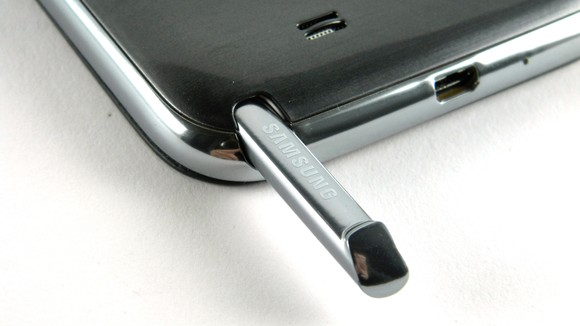
Now here's the thing - when we reviewed the original Samsung Galaxy Note, we didn't buy the S-Pen idea. We thought it was a gimmick.
Clearly, millions of people didn't agree, because the Samsung Galaxy Note sold by the truckload.
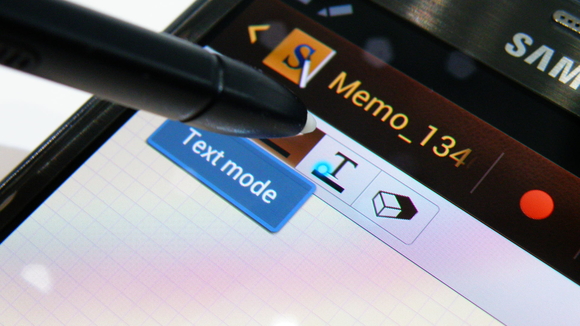
Was that because people were buying it for the bigger screen or the S-Pen? That's a whole different kettle of fish, but either way, the S-Pen is back and it's better than before.
As it did with the Samsung Galaxy Note 10.1, Samsung has now also worked on the pressure sensitivity.
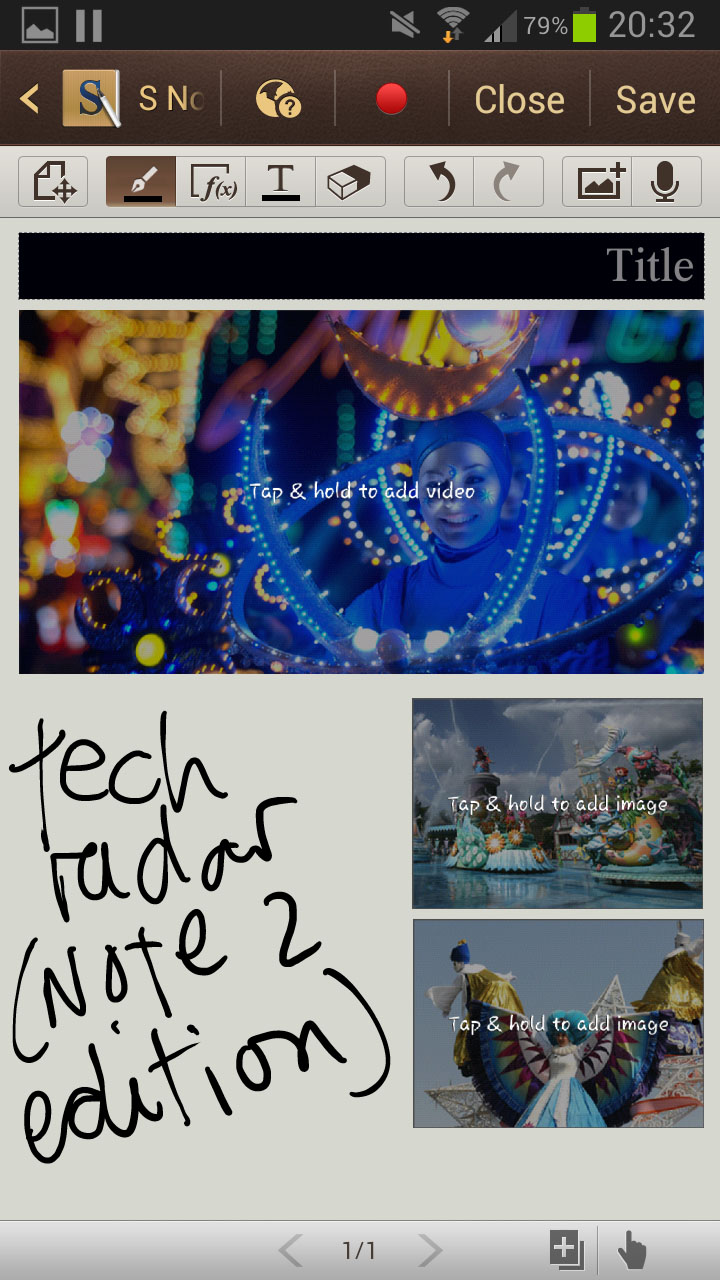
So just like a pen, the harder you press down on the screen, the thicker the imprint you make.
We're told there are 1000+ levels of sensitivity. We haven't checked every single one, but we take that as gospel from Samsung.
When you first pull the S-Pen out of its little holder at the bottom right, the phone vibrates quickly - almost as though you've given it a bit of a shock.
That then instantly fires up a splash screen full of S-Pen-capable apps that are pre-installed, enabling you to create anything from a simple note to a magazine or diary entry.
Though in all fairness, lovely as it is, we can't see Family Circle taking its entire desktop publishing operation to a Samsung Galaxy Note 2.
For drawing, it's simple enough, and will provide you with hours of fun.
But it's also really handy for more complex tasks, and we like the fact that you can add elements from videos and images to maps and voice memos to make your notes really interactive.
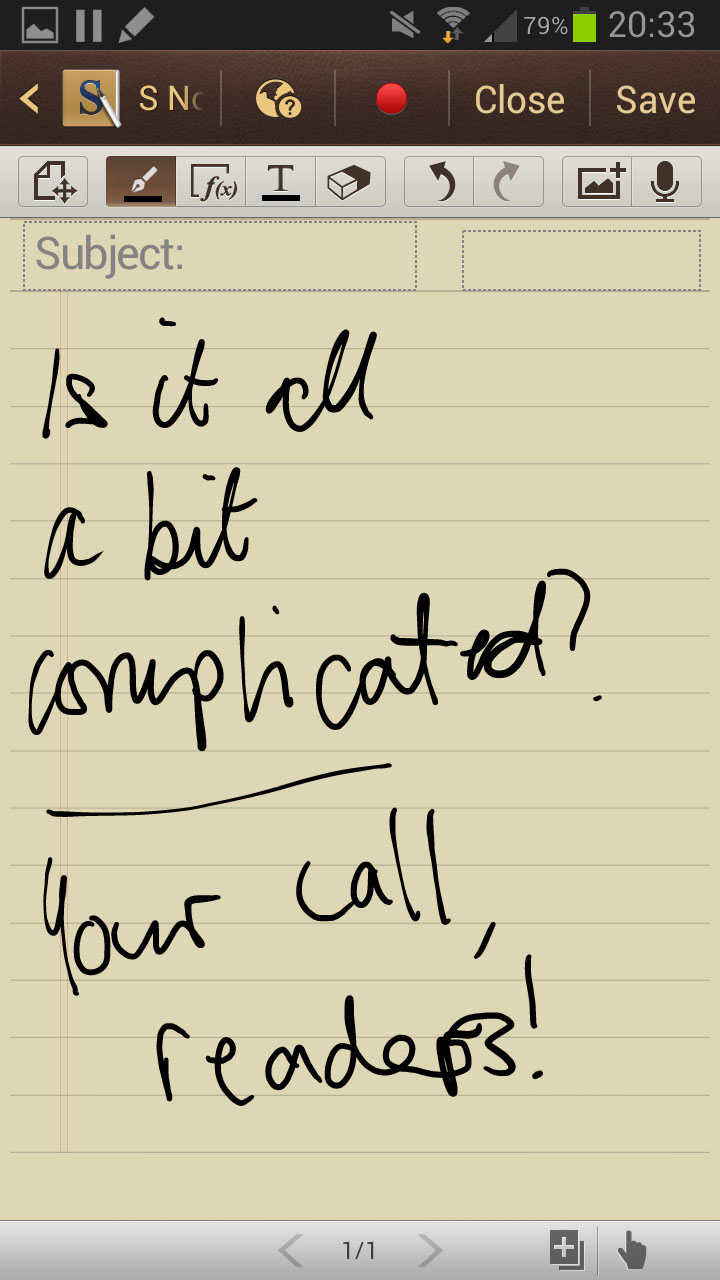
Not only that, but you can scrawl mathematical formulae and the Samsung Galaxy Note 2 will decipher it for you. Boffins rejoice.
But here's where it falls down for us: it's complicated. Very.
Like most of you, we're higher up the geek scale than your average Joe Bloggs, and are able to tinker about with various bits of tech without becoming too flummoxed.
But even we felt slightly overwhelmed by it all.
This is not a piece of technology that you will use straight out of the box - at least not to its full potential.
It needs some serious sitting down and exploring and a good investment of time to get the best out of it all.
If you're a student buying this for your studies or a professor obtaining it to help with some academic work, you may be willing to do this.
If you're just John Smith who's wandered into the local phone store, will you be happy to do the same?
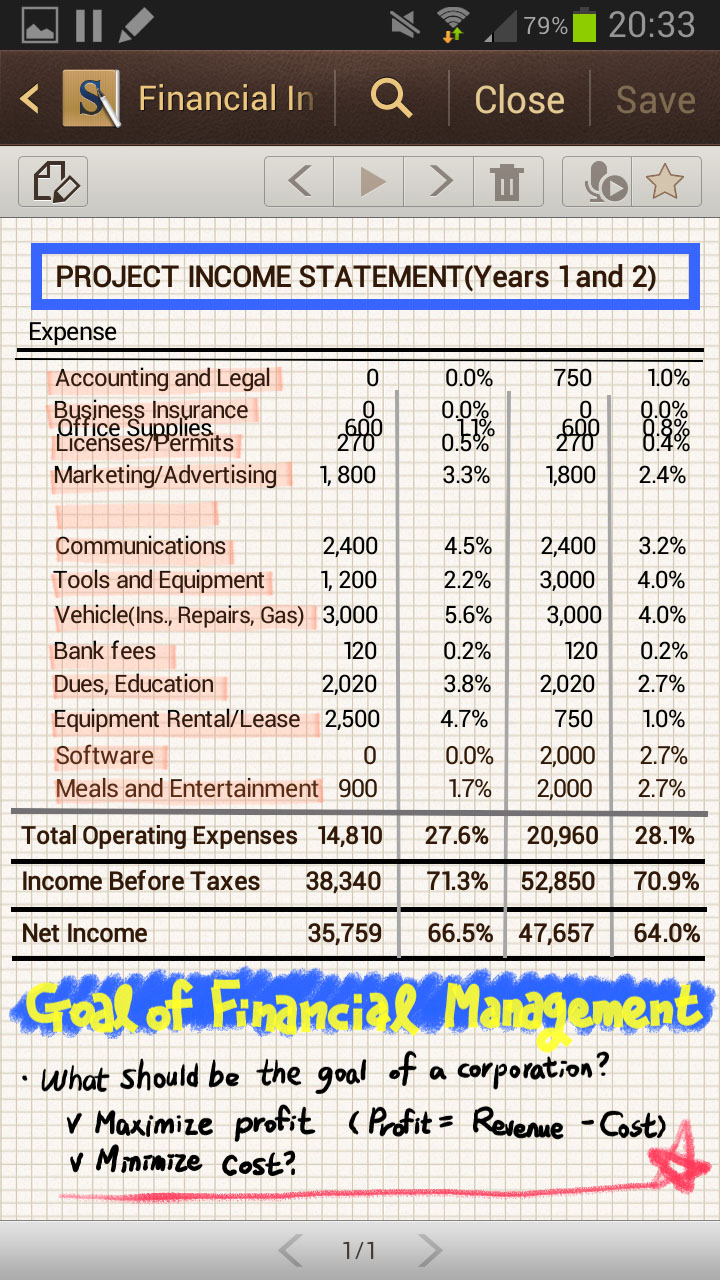
There is an official Samsung Note 2 app available that runs you through how to use the S-Pen, but after half an hour of using it, we just thought 'You know what? Life is too short'.
Some of the comments posted in response to our original Samsung Galaxy Note review said we'd missed the point - that this would indeed be the device used to annotate during lectures and so forth.
But aside from a few diehard users, we're still not hugely convinced.
And here's why - if that's your goal, something such as the Samsung Galaxy Note 10.1, which is a tablet and has all of the above included with a thicker, easier to hold S-Pen, may end up feeling like a better option.
From a practical level, it's also a little bit fiddly to get the S-Pen back in its slot.
Since it's not a perfect cylindrical form, it has to be fiddled with to drive it home. Not so much that it's going to make you scream, but enough to make you have to waste valuable seconds.
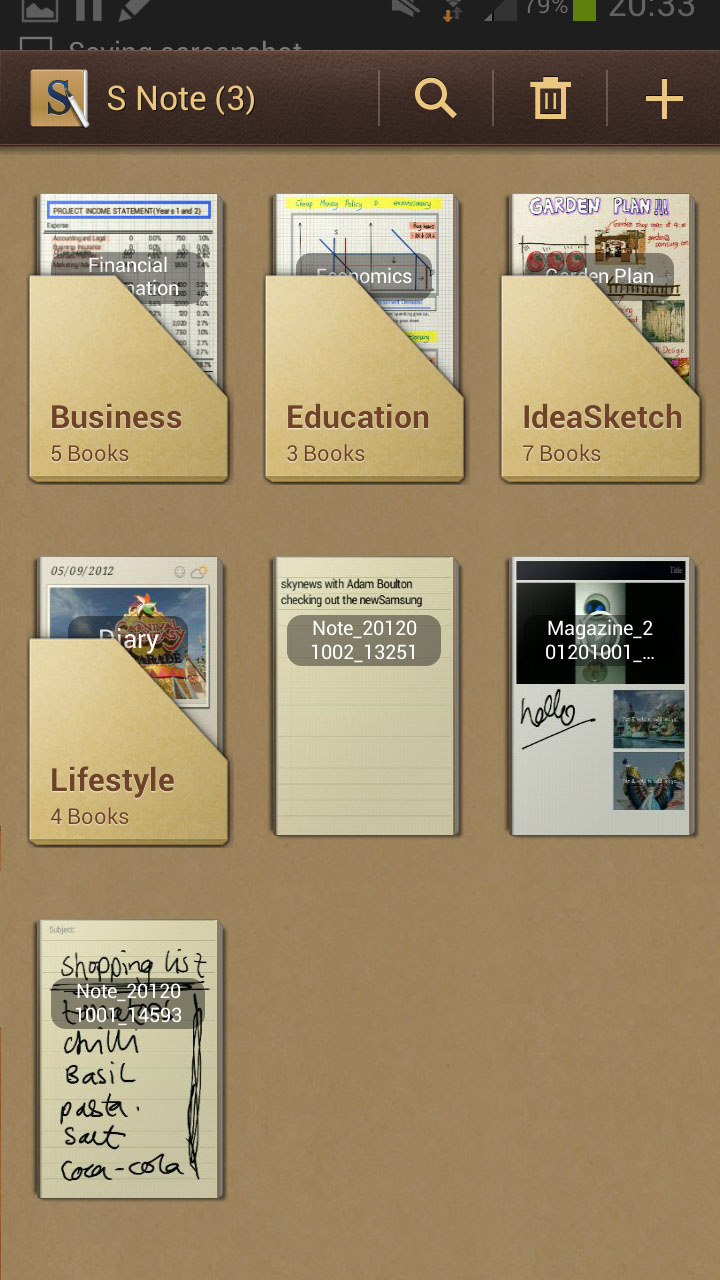
And as our friend Sylvia pointed out, if you're a lady with perfectly painted nails, having to hook a talon around the S-Pen to pull it out could result in catastrophe. It nearly did for her.
On top of that, when writing using the S-Pen, with the Samsung Galaxy Note 2 flat on the table, it's natural for right handers, when reaching the bottom of the screen, to brush the back button. Obviously, that's touch-sensitive, so you find yourself exiting and saving your work when you haven't even finished. It's like the phone is trying to give you a hint.
It's not that we dislike the S-Pen - or are hammering Samsung for bringing something new to the table - but we just found the whole thing a little too convoluted for anything more than just a little play.
And considering the Samsung Galaxy Note 2 is being marketed fairly heavily, we think a lot of people may feel the same about their new purchase.
Indeed, one thing we did like about the S-Pen very much was the Air View facility. It's one of those simple ideas that we never realised we missed until we were shown it on the Samsung Galaxy Note 2.
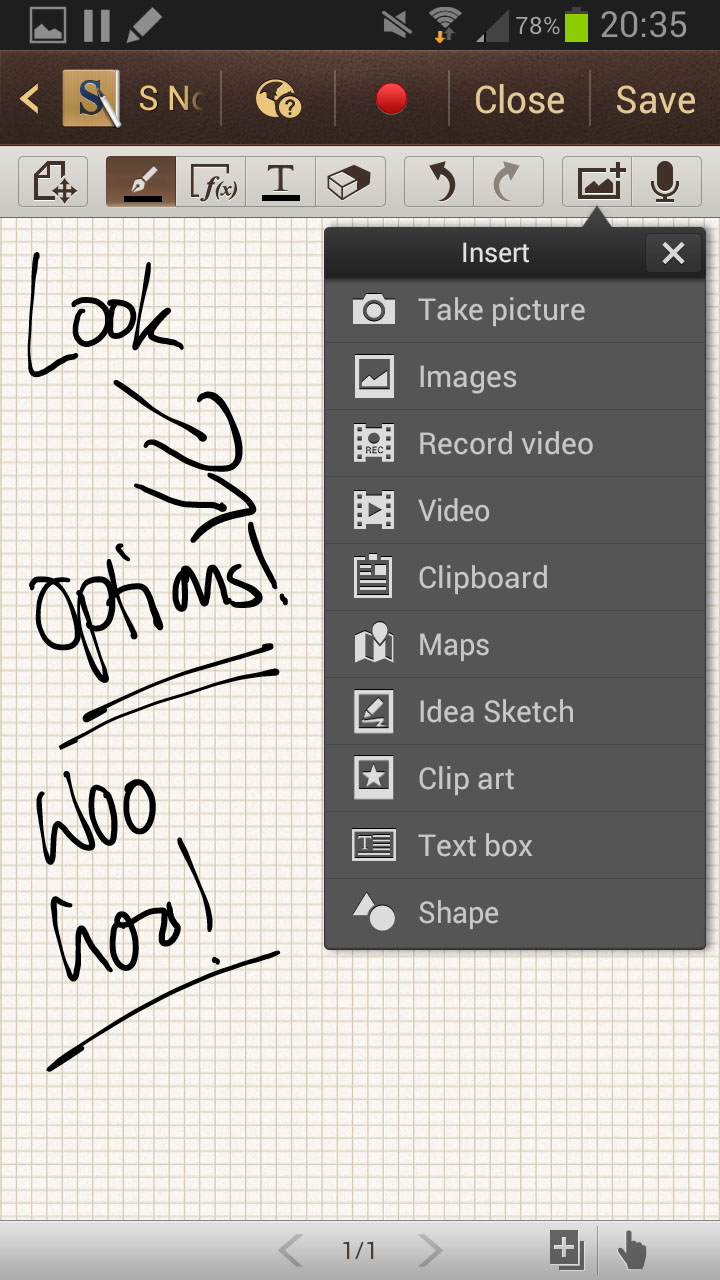
Air View is, essentially, a preview of things using the S-Pen. So, say you want to preview a folder in your gallery, you hover over it without even having to touch the screen and the phone can easily tell that's what you want to do. Throughout the interface, holding the S-Pen just over the screen gives a little blue dot to show that you're hovering.
Air View is present in loads of different areas - for example, we loved the fact that you can hover over the timeline in a video and it will continue playing, but give you a preview of the spot you're hovering over. It does take a bit of effort to move the Samsung Galaxy Note 2 in your hands and take the S-Pen out if you're watching a movie, but it works far better than the old fat thumbs.
It works great in email too - although we noticed that while the Samsung email supported it, the Google Gmail app doesn't. So we could preview our work emails, but not our private ones. Just another example of a great piece of tech being delivered by the OEM, but showing that the Android experience very much belongs to another company: Google.
And we have to point out here that you're restricted to just the S-Pen for this. We say this because the Samsung Galaxy S4 allows AirView with just the finger. We wait to see if that functionality will be gifted to Samsung Galaxy Note 2 owners as well.
Current page: Maps, apps and the S-Pen
Prev Page Battery life and connectivity Next Page Hands on gallery